All in all the project has been a good first experience of trying to meet industry standards on time. It has been a learning curve, and even though we dindt manage to finish the project on time, it has taught me lessons for the future, in terms of balancing workload with quality. I know now that we gave ourselves too much work to do in too little time, and we were realistically doomed from the start in terms of getting the work done. I was happy with the outcome of the project in the end though once it got finished, particularly the stylized effect we gave the piece, i think that worked very well, and gave our piece a stand out factor. I am also happy with the showreel i produced, although i came into problems when trying to burn and format the DVD, i ad no problems with the actual making of the showreel, which i found reassuring.
Other than making sure we don't take on too much work than we can cope with, in the future i feel i will learn from this project. I see this term as an opportunity well took to expand and apply those things i learned last term into a project. The term before this one was more about learning new techniques and practices, and this term was definitely more about applying them to a working environment.
In terms of team dynamics, i think we were very solid. Compared to last term where we had a group of 5 people, i think in the end we ended up getting on each others nerves by the end of it, however this was not the case this term, i felt me Josh and Depa built a very strong working relationship, which in truth i think is down to the fact that we are good friends anyway.
I feel i have made progress from last term and have proved to myself i can make things to industry standard, although i know there is a lot of room for improvement, however i have been invigorated with a boost of confidence which i know i will continue with throughout the summer and take into the third year.
Rendering to broadcast standards
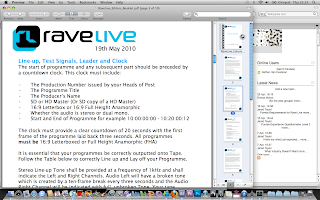
Unlike any other projects i have done at college, with this one i had to ensure it met broadcast standards. I was given a Rave live manual which had a lot of information to scan through to ensure it was ready for broadcast submission so that it could be shown correctly on wide screen monitors, and other platforms. Also we must ensure our piece sticks to certain rules, for example no explicit content, and no adult themes, this is important to get right, otherwise our footage wont get through QC.
Info below is taken from Rave Live user manual...
Line-up, Test Signals, Leader and Clock
The start of programme and any subsequent part should be preceded by a countdown clock. This clock must include:
• The Production Number issued by your Heads of Post • The Programme Title • The Producer’s Name • SD or HD Master (Or SD copy of a HD Master)
• 16:9 Letterbox or 16:9 Full Height Anamorphic • Whether the audio is stereo or dual mono. • Start and End of Programme for example 10:00:00:00 - 10:20:00:12
The clock must provide a clear countdown of 20 seconds with the first frame of the programme laid back three seconds. All programmes must be 16:9 Letterboxed or Full Height Anamorphic (FHA)
It is essential that your programmes be correctly outputted onto Tape. Follow the Table below to correctly Line up and Lay off your Programme.
Video
• 625 lines • 50 fields per second interlaced • 16:9 aspect ratio, FHA preferred • Captions should be protected for 4:3 display (Use 4:3 Title Safe) • Both longitudinal time code (LTC) and vertical interval time code (VITC)
• Picture must be sharp, high quality and of ‘broadcast standard’
• Colours are a realistic representation unless otherwise intended
• Black & White crushing should be avoided
• Audio is of a high quality
• Avoid flashing and strobing images
• Content should be appropriate for afternoon broadcast at Rave Live 2010, and
therefore should not feature foul language, nudity, drug abuse, sexual
references or extreme violence.
• Nudity must be blurred or cut altogether
• Any foul language or swearing is cut altogether from that person’s speech
• No copyright infringement
Compositing
When i arrived at the compositing stage, i knew the project was nearly over, all that needed to be done was import all the rendered image files into AE, and add the effects and clip the whole thing together. I received 5 image files off Depa of the cut scenes with text which i needed to put into different places in the narrative to help progress the story. Once everything was in place, and the animation flowed well, i added an adjustment layer to the whole thing, and added a Hue/Saturation effect, clicked the colorize box, and decreased saturation to get a nice sepia effect to the whole project. I then imported the real time 8mm video footage i found on the internet, changed the layer type to 'Multiply' to get rid of all the white spaces within the footage, so only the black scratchy effect was left, then stretched the video over my own to play throughout as a separate layer. I also decided to include a separate image file right at the end of the sequence to prologue the time the Rave Live logo was seen on screen, so the last couple of seconds of the sequence is an image file, rather than a piece of rendered footage.
In my opinion i feel the process of compositing went very smoothly, however i ran into one problem. I originally made the AE project on the new CS5 programme, and couldnt render it because it was only a tester version. I then thought, oh ok ill just open it up on a college computer, and i couldnt, because the versions are not backdateable, and college computers only had CS4 versions of AE. This was nothing mroe than an inconvenience in the end, as i had left enough time to redo the project swiftly in one morning at college. I know for future now that this cant be done, and ill make sure it never happens again.
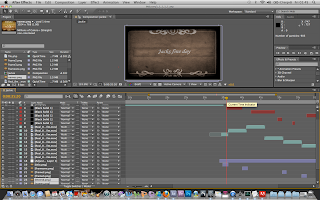


The images below show me implementing all the different aspect of our project into the same scene, just to test what the scene looked like, and whether they looked good together. Also this gave me the opportunity to scale each piece down to its appropriate and realistic size.
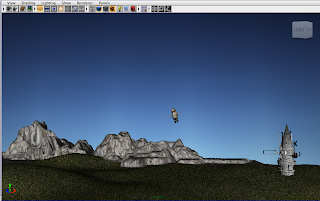

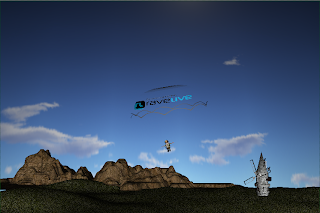
This video is of the 8MM footage played over the first scene, this is with the Hue/Saturation effect switched off.
In my opinion i feel the process of compositing went very smoothly, however i ran into one problem. I originally made the AE project on the new CS5 programme, and couldnt render it because it was only a tester version. I then thought, oh ok ill just open it up on a college computer, and i couldnt, because the versions are not backdateable, and college computers only had CS4 versions of AE. This was nothing mroe than an inconvenience in the end, as i had left enough time to redo the project swiftly in one morning at college. I know for future now that this cant be done, and ill make sure it never happens again.



The images below show me implementing all the different aspect of our project into the same scene, just to test what the scene looked like, and whether they looked good together. Also this gave me the opportunity to scale each piece down to its appropriate and realistic size.



This video is of the 8MM footage played over the first scene, this is with the Hue/Saturation effect switched off.
Selling Myself
When i was speaking earlier about using my work i am most proud of, i decided to include a few pieces that are going on to my showreel. Below are examples of modeling, texturing and lighting, including last terms project of the church, which i decided to re light as the lighting that was previously on it didn't look realistic. I am particularly proud of the kitchen as this was made from scrap to finish by myself, meaning i did every stage of production, which i hadn't done very often previously.
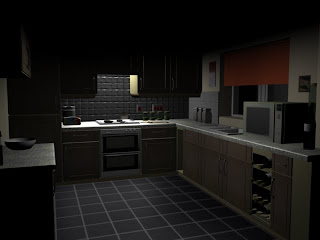
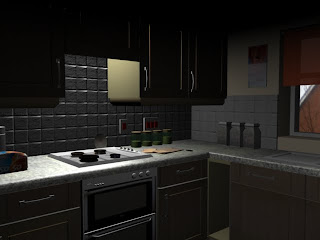
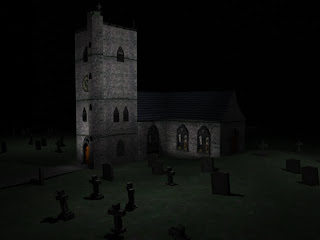
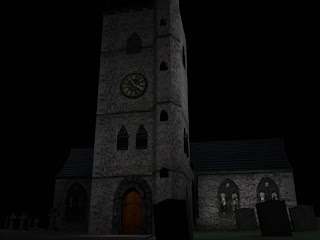






What needs to be on a showreel?
I asked myself the question, what needs to be on a showreel, and what to employers look for when they are going through showreels...
Clear and precise Contact information
I made sure i included a whole section dedicated towards contact information which had my Full name and social and working contact emails on them, so that potential employers could easily contact me. I know this is very important to do, as employers do not want to waste their time searching around for contact information when they could be getting on with other things.
Your best work
In my showreel i must ensure that i only include my best works. There is no point putting work into my showreel that i am not proud of, or that is totally unworthy of being seen by employers, as it is better to show a small amount of excellent work, rather than a lot of 'poo' work.
Should you include unfinished work?
I was debating whether or not i should put unfinished work into my showreel (ie. work in progress) however i came to the conclusion that there was no point in doing so as most of the focus of my showreel is UV mapping and texturing work, and that generally means it is near enough finished if it is at that stage in production. Also i didn't have any work in progress i could include in my blog at that present time, however i am currently working on building my house in Maya, and i put certain finished aspects of that project in my showreel.
Life drawing and drawn concept work
I know that an important aspect of work that employers look for is concept work and life drawing, however i didn't have any of this i was particularly proud of, so i decided to exclude it for the time being. However, i know for a fact now this is something i must work on over the summer period to fill in the massive gaping holes in my portfolio.
Best work at the front
I think this mainly applies to video reels, however i implemented some aspects of this into my DVD menu display, with the top sections those i was most proud of.
Something that will stick in their minds
I dindt include so much of this for this project, however for when i start to send my showreel to future employers, i need to ensure i come up with a way for my showreel to stick in the minds of those people looking through them. The main reasons for this, is because the intake of showreels at studios must be immense, and looking through DVDs all day must become very same-ish and tedious, so having something to make you stand out above the rest and stick in the minds of the employer is vital, even if it is a decorated box, in fluorescent colours.
Sell Yourself not the Uni
Once i leave uni i wil be independant from the university, and my main focus is to promote myself, not my working institution, so there is no need for me to include only works that i done in university, I have got around doing this by including some of my own individual work, including work i did on work experience as well as work that i have been doing independently, building my own home in Maya.
Clear and precise Contact information
I made sure i included a whole section dedicated towards contact information which had my Full name and social and working contact emails on them, so that potential employers could easily contact me. I know this is very important to do, as employers do not want to waste their time searching around for contact information when they could be getting on with other things.
Your best work
In my showreel i must ensure that i only include my best works. There is no point putting work into my showreel that i am not proud of, or that is totally unworthy of being seen by employers, as it is better to show a small amount of excellent work, rather than a lot of 'poo' work.
Should you include unfinished work?
I was debating whether or not i should put unfinished work into my showreel (ie. work in progress) however i came to the conclusion that there was no point in doing so as most of the focus of my showreel is UV mapping and texturing work, and that generally means it is near enough finished if it is at that stage in production. Also i didn't have any work in progress i could include in my blog at that present time, however i am currently working on building my house in Maya, and i put certain finished aspects of that project in my showreel.
Life drawing and drawn concept work
I know that an important aspect of work that employers look for is concept work and life drawing, however i didn't have any of this i was particularly proud of, so i decided to exclude it for the time being. However, i know for a fact now this is something i must work on over the summer period to fill in the massive gaping holes in my portfolio.
Best work at the front
I think this mainly applies to video reels, however i implemented some aspects of this into my DVD menu display, with the top sections those i was most proud of.
Something that will stick in their minds
I dindt include so much of this for this project, however for when i start to send my showreel to future employers, i need to ensure i come up with a way for my showreel to stick in the minds of those people looking through them. The main reasons for this, is because the intake of showreels at studios must be immense, and looking through DVDs all day must become very same-ish and tedious, so having something to make you stand out above the rest and stick in the minds of the employer is vital, even if it is a decorated box, in fluorescent colours.
Sell Yourself not the Uni
Once i leave uni i wil be independant from the university, and my main focus is to promote myself, not my working institution, so there is no need for me to include only works that i done in university, I have got around doing this by including some of my own individual work, including work i did on work experience as well as work that i have been doing independently, building my own home in Maya.
Creating a showreel
The showreel was the other part of its terms project, we were told we needed to produce a professional looking showreel and submit it on to a DVD format disc so that it plays as a DVD. After we had one tutorial on the software, we were expected to get on with it. At first i found the software a little confusing but after about half an hour playing around with it i started to get the hang of it. I then had a decision to make. I could either produce a showreel as an edited piece of video and then submit it on a DVD so it plays directly off of it, or i could produce an interactive sectioned DVD which displayed different areas of my work more clearly and precisely. I went with the second option. i divided my shoreel into five sub section menus of, Modelling, Texturing, Lighting/Art, Animation and Contact details. At this stage i was thinking of placing my best work at the top menu of the showreel, so in this case i put texturing at the top of my menus, as this is the area i feel most confident in.
After creating the sub menus, i began to add tracks for videos and other menus to display other work i had produced. I had to make sure i linked each menu back to the root menu, so that the user would not get lost in the interface. All in all i felt my menus were very easy to use, evne though i opted to use Back buttons allowing the videos to loop continuously, rather than automaticly linked back tracks which linked to the previous menu after one play.
One of the individual touches i added to my showreel was creating colour coded and animated menus in after effects which i then bought in to the DVD studio pro software. i thought this worked very well, allowing the user to interact with the colour coded menus easier and more efficiently. I also created individual overlays for the buttons as PSD files in Photoshop. This allowed me to tint the button with a specific colour as the user scrolls over a particular button or image. This made the whole interaction process easier, and let the user know what button he was at on the menu if he was using a DVD player with a remote control rather than a mouse on a computer.
I was rather proud of my showreel for a first attempt, and i very much enjoyed the process of making it, i do however feel that in the future i cn customise my menus a little more, to cement my own specific style to the piece a little more effectively.
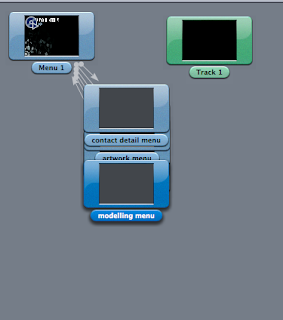
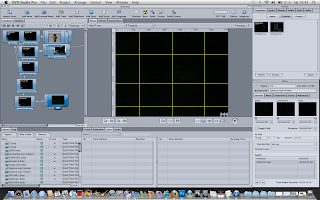

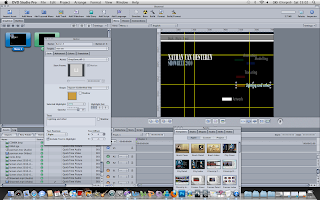
The image below shows the first stage in the showreel process, i had to cherry pick my best work form the last two years and import them all on to one hard drive, and divide them all into sections ready for importing into Studio Pro.
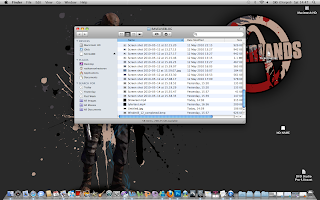
Below are examples of the AE work i did for colour coding my menus.
After creating the sub menus, i began to add tracks for videos and other menus to display other work i had produced. I had to make sure i linked each menu back to the root menu, so that the user would not get lost in the interface. All in all i felt my menus were very easy to use, evne though i opted to use Back buttons allowing the videos to loop continuously, rather than automaticly linked back tracks which linked to the previous menu after one play.
One of the individual touches i added to my showreel was creating colour coded and animated menus in after effects which i then bought in to the DVD studio pro software. i thought this worked very well, allowing the user to interact with the colour coded menus easier and more efficiently. I also created individual overlays for the buttons as PSD files in Photoshop. This allowed me to tint the button with a specific colour as the user scrolls over a particular button or image. This made the whole interaction process easier, and let the user know what button he was at on the menu if he was using a DVD player with a remote control rather than a mouse on a computer.
I was rather proud of my showreel for a first attempt, and i very much enjoyed the process of making it, i do however feel that in the future i cn customise my menus a little more, to cement my own specific style to the piece a little more effectively.




The image below shows the first stage in the showreel process, i had to cherry pick my best work form the last two years and import them all on to one hard drive, and divide them all into sections ready for importing into Studio Pro.

Below are examples of the AE work i did for colour coding my menus.
Balancing the projects
With the Rave Live project aimed at actual clients, we knew we had more of a responsibility this term. Although we were not able to complete the project to the desired time set out, i did learn a lot about balancing two projects at the same time. I knew that the rave live project was due before the showreel, so the initial plan was to focus on the rave live brief for the first 4-5 weeks and then use the remainder of the time of term to focus on the showreel project. However this did not end up being the case. We found ourselves setting too much work to complete within a too short time span, and i do regret this.
In future i would definitely look to set ourselves a shorter work load, as i do not think it is the case that we worked too slow, rather i think we set ourselves too much to cope with. Cutting down the animation definitely helped us complete the project however it did have a detrimental effect to the quality of our work.
The showreel project helped that the software was very easy to use, and compiling the showreel didn't take very long at all, and i managed to do ti all within a few days from start to finish, including compiling all the information needed to go into the reel, and i was very happy about the outcome of that project with the exception of the render out which didn't work due to technical difficulties, however i look at it in a positive light, as i wouldn't be showing my employers that work in the end anyway, and by the time i go out looking for work in the industry, my showreel would be of a much higher standard.
In future i would definitely look to set ourselves a shorter work load, as i do not think it is the case that we worked too slow, rather i think we set ourselves too much to cope with. Cutting down the animation definitely helped us complete the project however it did have a detrimental effect to the quality of our work.
The showreel project helped that the software was very easy to use, and compiling the showreel didn't take very long at all, and i managed to do ti all within a few days from start to finish, including compiling all the information needed to go into the reel, and i was very happy about the outcome of that project with the exception of the render out which didn't work due to technical difficulties, however i look at it in a positive light, as i wouldn't be showing my employers that work in the end anyway, and by the time i go out looking for work in the industry, my showreel would be of a much higher standard.
Subscribe to:
Posts (Atom)